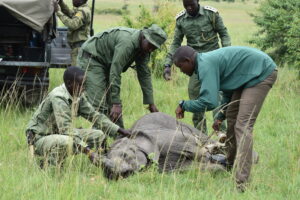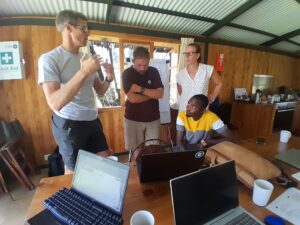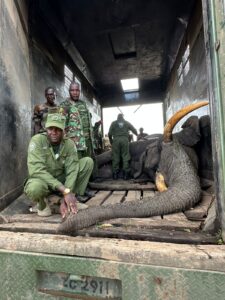
The eighth year of operation for Mara Elephant Project was kicked off with two prominent successful operations by the MEP intelligence team along with Kenya Wildlife Service and the Police that led to the recovery of a total of 81 kg of ivory and the arrest of four suspects. Our intelligence team continues to shine and the two busts they led in January are evidence of their continued effectiveness. Their first bust was near the main road heading to Nairobi from Narok in Ntulele where one suspect was arrested with four tusks weighing 39 kg. The second bust of 42 kg of ivory was of a Ugandan who also had a huge sack of wildlife bones. This bust made the national news in Kenya. pictured left: The arrest on January 23 of a Ugandan with wildlife bones and 42 kg of ivory.
MEP Monthly Report January 2020
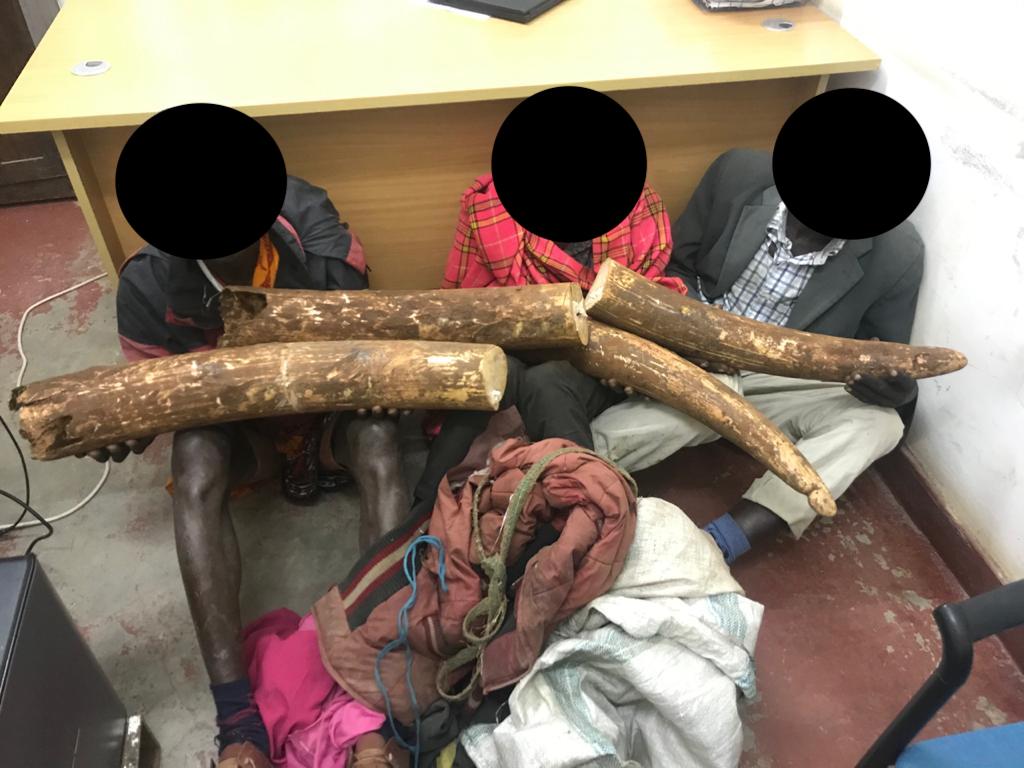
The ivory seized during a MEP intelligence operation on January 2 with three suspects arrested.
Heavy rains persist in the Mara ecosystem and although the wildlife is very happy, 10 camps along the Talek River have been evacuated and many roads have been closed. The bridge across the Mara River in Mararienta has been impassable for much of the month and the southern baily bridge has also been impassable for several days. In January, for MEP’s rapid response teams, it has been a challenge to get around, but the Karen Blixen Camp Trust helicopter has been a great help with logistics this month, which is why we have flown more than our average of 30 hours per month. We provided support to our ranger teams, moved stranded tourists, attended key meetings, and patrolled some of the wettest areas by air.

The river flowing over the Mara bridge in January photographed from the air.
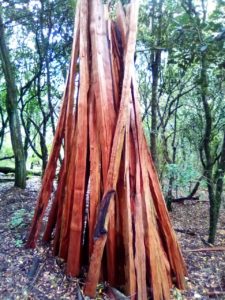
On the ground, Mara Elephant Project rangers were very busy to start the year. Beyond the two large ivory seizures and subsequent arrests, MEP rangers also destroyed 15 kilns, confiscated 39 bags of charcoal, 3,610 pieces of cedar, 30 illegal logged posts and arrested five suspects for illegal logging or charcoal production in the Loita area, mostly the Nyakweri Forest. The Sheldrick Wildlife Trust Mau De-Snaring Unit destroyed 14 kilns, 21 bags of charcoal, seized 5 kg of bushbuck meat and arrested three suspects for bushmeat poaching, recovered 440 pieces of cedar, one power saw, 45 pieces of cypress, 12 illegal posts and arrested 10 suspects for illegal logging or charcoaling. Finally, a total of seven snares were removed and one suspect was arrested along with a power saw cutting down trees. pictured left: The 300 cedar posts recovered by the MEP Loita ranger team on January 7.
The Karen Blixen Camp Trust helicopter was essential to an aerial reconnaissance mission that spotted two lorries in the Loita Forest loaded with cedar posts. The Loita ranger team intercepted the lorries and all of the posts were transported to the Naroosura police station. The KBCT helicopter also furnished a search and rescue mission of a lost woman. Unfortunately, she had already passed away from falling off a cliff, but the community was very thankful for our efforts to try and find her. There were 10 total incidents of human-elephant conflict in January, the helicopter was required in only one incident. Since we’ve seen little conflict the last month, we believe that elephants are unable to cross the river right now. Ivy – one of our biggest crop raiders – has been spending her time around the MEP HQ with her herd. Lempiris proved to be a problem in January as he was crop raising in farms and breaking geofences. He met up at Kiambi at one point in a conservancy and from there stayed safely away from communities. Fitz spent his days in the forest and was moving into farmland at night. He and his herd of 65 were responsible for a large conflict incident on January 31 that caused the death of a community member. Unfortunately, Alice’s collar stopped reporting on 11th of January.
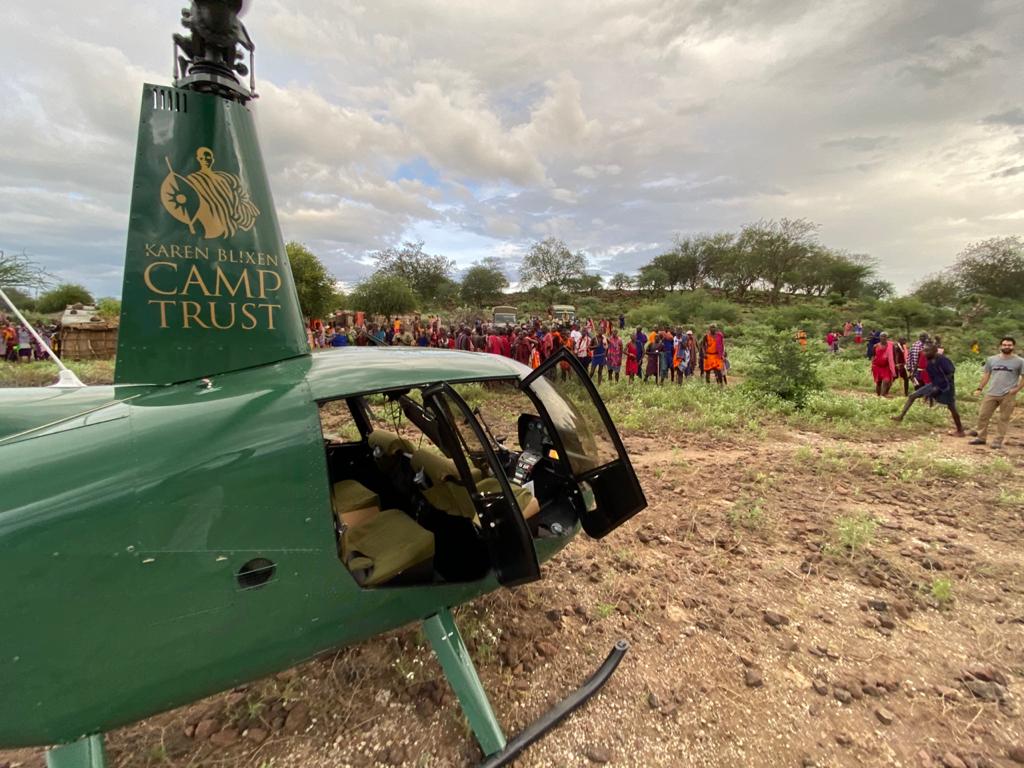
The KBCT helicopter being used during the search for the missing woman.
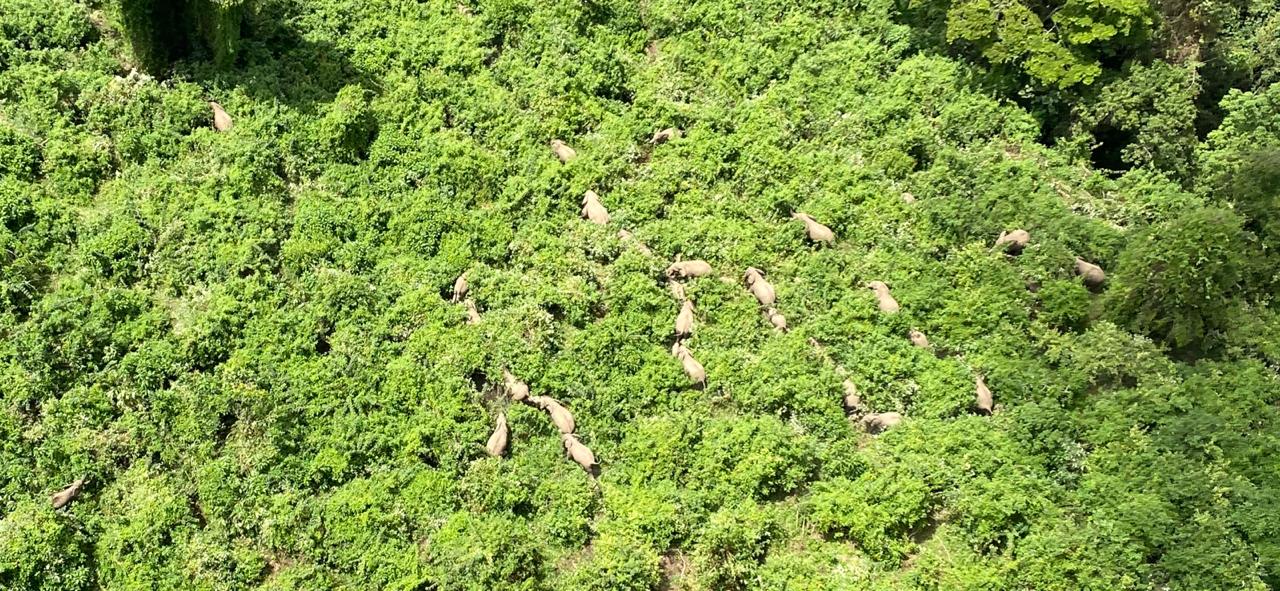
WildAid supported Maximus’ herd photographed from the Karen Blixen Camp Trust helicopter while aerially monitoring he and Alice in the Mau Forest on January 6.
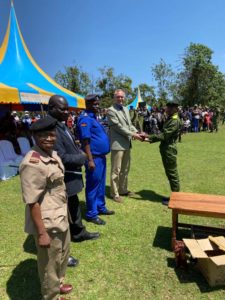
The new Sheldrick Wildlife Trust Mau De-Snaring Unit and Loita team’s passing out parade was well attended by Police, Administration, Forestry, the cadet’s families, and over 500 community members. Both teams were deployed in late 2019 and are already having an impact. Mara Elephant Project rangers experienced some resistance to their presence in the Naroosora area. MEP management attended a large community meeting to better relations in the area and our partners at the District Officer and OCS from the Kenya Police have been helpful to addressing the community’s concerns. The MEP ranger team continues to operate in the area and have been successful in stopping the cedar logging. pictured left: MEP CEO Marc Goss at the passing out parade.
This year also began by deploying two new elephant collars onto one female and one male (Gina and Dicki) in the Shimba/Mwaluganje ecosystem. During aerial patrols conducted in January with Kenya Wildlife Service using the Karen Blixen Camp Trust 5Y-MEP helicopter, there was evidence that poaching is still an issue in this part of Kenya. The Shimba elephants were badly affected by poaching in the last decade and little is known about their current distribution and range, which is why at the request of KWS, MEP deployed two collars in January in the area. These two collars will help give us an idea as to where these elephants are travelling and how they are using the ecosystem. The collaring operation and all subsequent monitoring of these two elephants was done in collaboration with the Kenya Wildlife Service and supported by generous MEP donors.
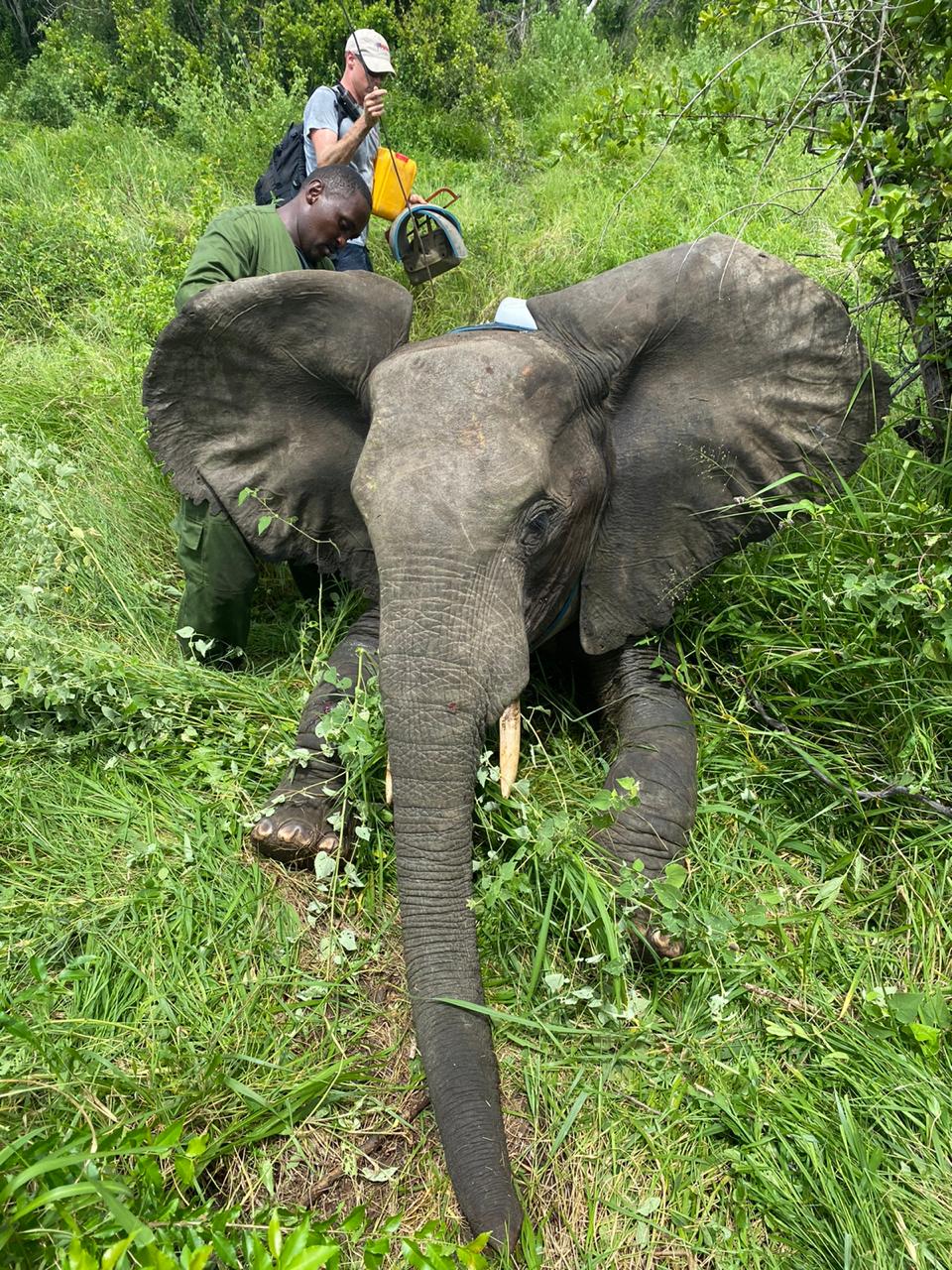
One of the elephants collared in Shimba Hills on January 2 and 3.
Mara Elephant Project ended 2019 with increased support from donors across the world. That momentum trickled into January, where we continued to see year-end donations come in. MEP started the first quarter by applying for three different grants. We had over 100 kilograms of seed balls donated by two individuals from Seedballs Kenya for MEP rangers to distribute in the Mara ecosystem. MEP collected $937.69 from donor’s support on Facebook thanks to four people who celebrated their birthdays by hosting a fundraiser for MEP. Thank you to Valerie, Hanna, Cajza and Tressa for your support. We received $13,556 through 66 individual donations via PayPal and a further $125,500 in donations directly, as well as $1,215 from Föreningen Försvara Elefanterna. Thank you to everyone for your generous support.
HQ hosted visitors from Richard’s Camp, Asilia and Angama Mara in January, we appreciate everyone who sends passionate conservation focused people to MEP. There were incredible entries in January to kick off the 2020 Greatest Maasai Mara photo competition. Thank you to Diana Knight, Ken Conger, Alexandra Baumgart, Sascha Feuster, Mary Hayden, Romit Shah, Peter Muigai, Peter Coad, Marvin de Kievit, Antony Kitavi, Victor Kimathi, Stephen Underwood, VijayRam Harinathan, Harman Singh Heer, Margaret Bishop, David Rutter, Susan Michel, Paul Vorster, Fabrice Broche, Laura Henning, Sean McDermott, Charlotte Rhodes and Gurcharan Roopra for supporting MEP!
 An entry for January in the GMM photo competition by Gurcharan Roopra.
An entry for January in the GMM photo competition by Gurcharan Roopra.
